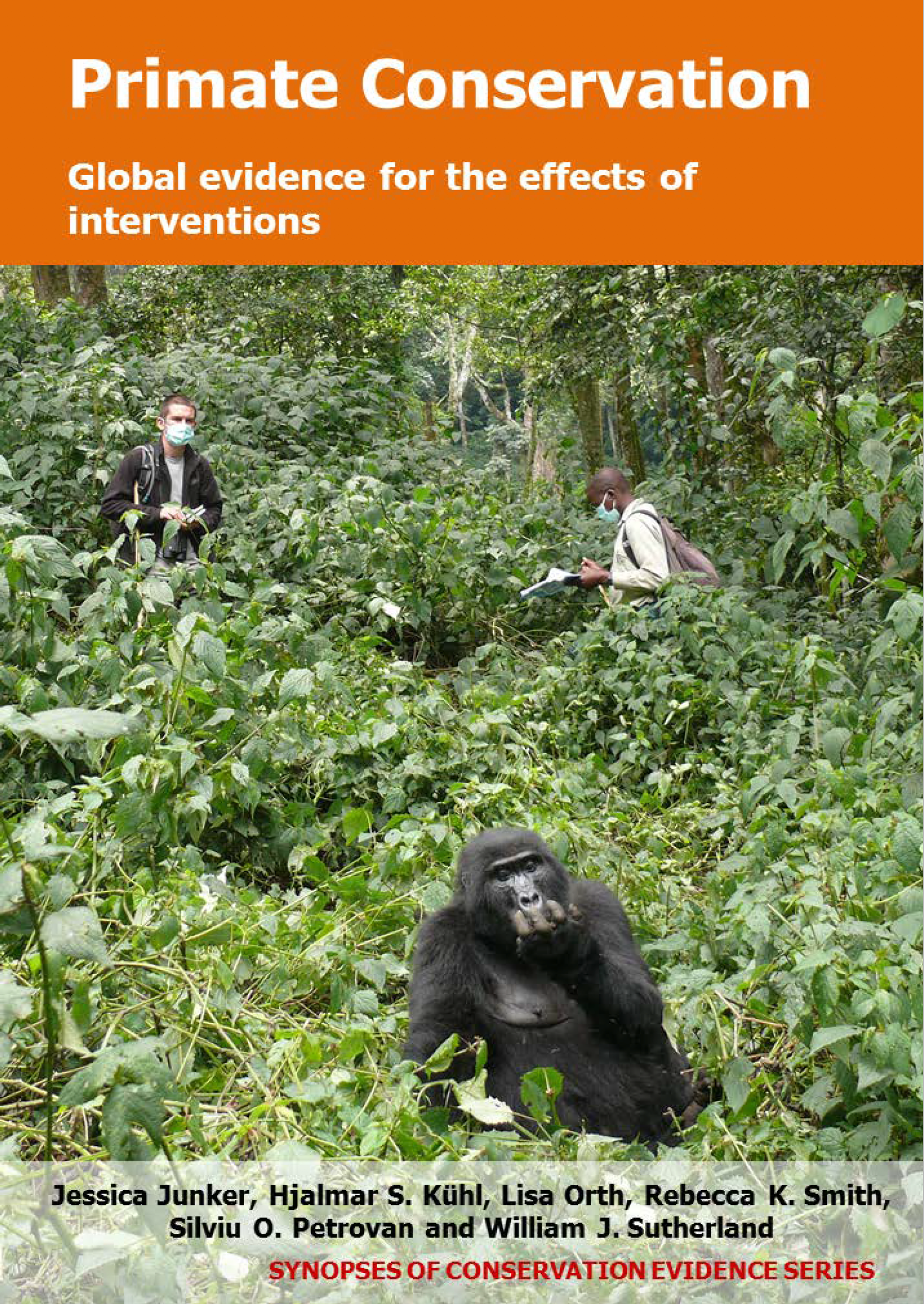Regularly de-activate/remove ground snares
-
Overall effectiveness category Likely to be beneficial
-
Number of studies: 3
View assessment score
Hide assessment score
How is the evidence assessed?
-
Effectiveness
60% -
Certainty
40% -
Harms
0%
Study locations
Supporting evidence from individual studies
A before-and-after trial in 1984-1987 in tropical montane forest in the Virunga ecosystem in Rwanda and the Democratic Republic of Congo found that mountain gorillas Gorilla beringei beringei ranging in habitat that was regularly patrolled for snares alongside other interventions, increased from 242 to 279 individuals (15% increase) in 1981-1986. Average group size increased from 8.5 to 9.2 individuals (17% increase) and immature proportion increased from 39.7 to 48.1% (8% increase) over the same time period. Regular total counts of this population were conducted since 1973. Anti-poaching guards regularly patrolled the area. Guards were provided with cars, radio communication, uniforms, more rations and other equipment that allowed them to increase patrol frequency and effectiveness. In 1985, a gorilla viewing tourism programme was started during which three gorilla groups were habituated for tourist viewing. The study does not distinguish between the effects of the different interventions mentioned above.
Study and other actions testedA before-and-after study in 1967-2008 in tropical montane forest in Volcanoes-, Mgahinga-, and Virunga National Parks located in Rwanda, Uganda, and the Democratic Republic of Congo, respectively, found that despite the regular removal of snares alongside other interventions, the mountain gorilla Gorilla beringei beringei population decreased over time. Annual population decline was 0.7%, resulting in an overall population decrease of 28.7% over the entire study period. However, no statistical tests were carried out to determine whether this decrease was significant. Rangers patrolled the whole park and confiscated more than 1,500 snares/year. They also conducted regular anti-poaching patrols and when necessary, herded livestock out of the park. Additional interventions included local conservation education and community development projects. The study does not distinguish between the effects of the different interventions mentioned above.
Study and other actions testedA before-and-after trial in 2007-2009 in tropical forest in Kakum Conservation Area in Ghana found that the regular removal of ground snares alongside other interventions, led to a decrease in the number of snares recovered by teams over time as well as fewer illegal attempts to hunt primates. More specifically, the number of snares recovered decreased from 452 to 114 (75% decrease). However, no statistical tests were carried out to determine whether this difference was significant. In addition, in 2008-2009, the number of illegal hunting activities and attempts to hunt the bush baby Galagoides demidoff, Bossmann potto Perodicticus potto, Lowe’s monkey Cercopithecus campbelli lowei, spot-nose monkey Cercopithecus petaurista petaurista, olive colobus Procolobus verus, Geoffroy’s pied colobus Colobus vellerosus decreased from 1182 to 874 (26% decrease). Snare removal took place during foot patrols. Teams also regularly conducted randomized anti-poaching patrols. The study does not distinguish between the effects of the different interventions mentioned above.
Study and other actions tested
Where has this evidence come from?
List of journals searched by synopsis
All the journals searched for all synopses
This Action forms part of the Action Synopsis:
Primate Conservation
Primate Conservation - Published 2017
Primate Synopsis





)_2023.JPG)














